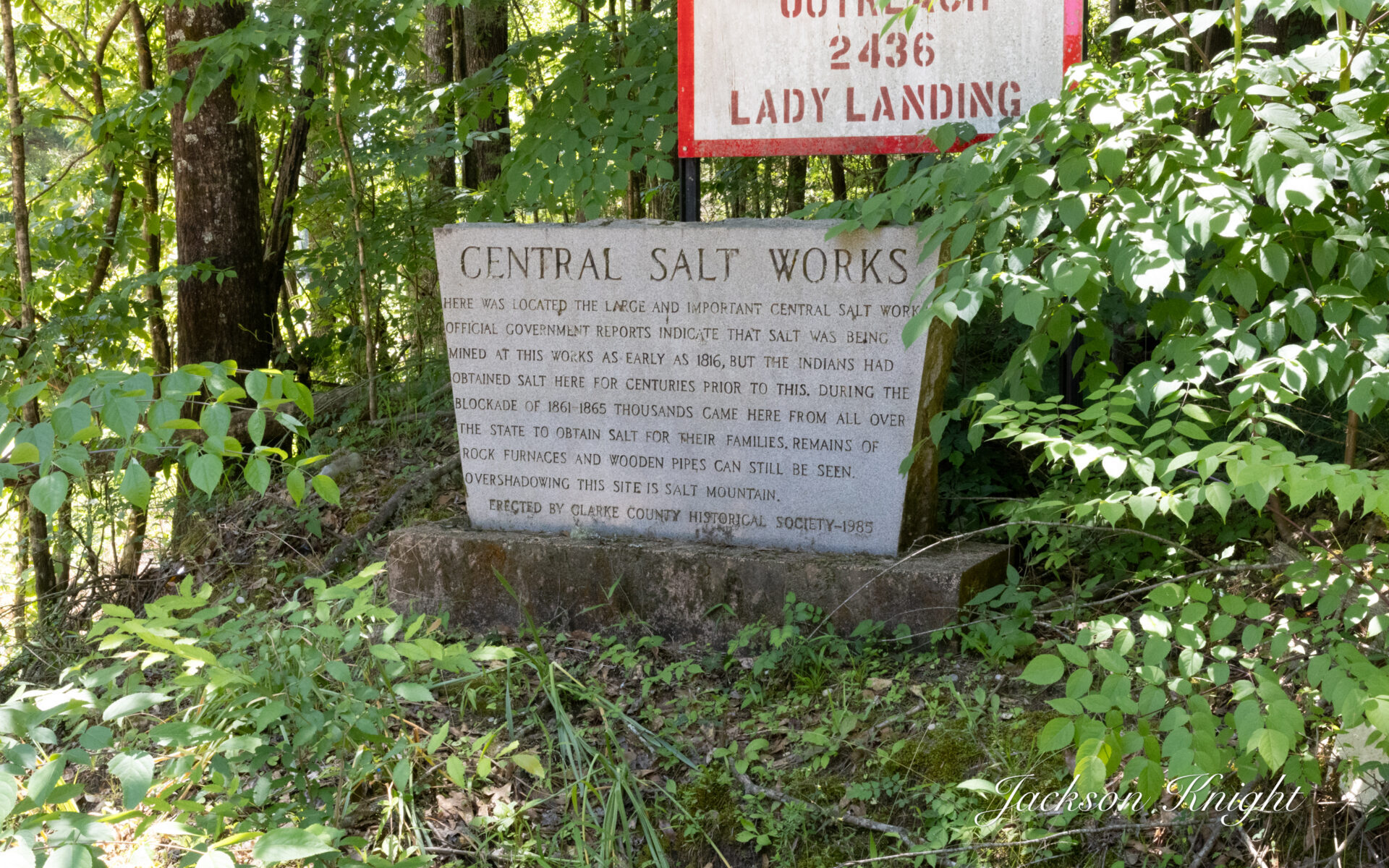Rambling through the countryside always fascinates me. I say it every time I go on a rambling expedition. We are working on Clarke County currently and like so many other places it is a fascinating place to visit. One thing I have found in Clarke County is the number of granite historical markers that are located there. We recently came upon this neat marker near the community of Rockville. It marks the site of one of the South’s most critical wartime resources: the Central Salt Works. This historic…
Salt was an indispensable resource in the 19th century, primarily used for preserving meat before the advent of refrigeration. At the outbreak of the Civil War, much of the South’s salt had been imported from abroad—especially from England. However, the Union naval blockade, which began in 1861, effectively cut off these external supplies. This left the Confederacy scrambling to secure domestic sources of salt, as it became vital for both food preservation and other military uses (Jones, 2013, p. 114).
Clarke County, blessed with natural salt springs, quickly became a hub for Confederate salt production. Three major works sprang up: the Upper, Central, and Lower Salt Works. Among these, the Central Salt Works, located approximately six miles south of Jackson on Salt Creek, became particularly significant. Here, brine was drawn from subterranean springs and boiled in massive iron kettles set over fireboxes, a labor-intensive process that could produce over 600 bushels of salt daily at the operation’s peak (Alabama Historical Association, 1985).
The scale of the operation demanded a substantial labor force and logistical network. To defend the works against Union raids, Confederate forces constructed Fort Stonewall and Fort Sidney Johnston on the Alabama and Tombigbee Rivers. These fortifications were part of a broader strategy to safeguard critical inland resources and maintain supply lines to the Confederate armies (Brewer, 1872, p. 295).
Despite these efforts, the salt works were under constant threat. Union raiding parties frequently targeted salt production facilities throughout the South, understanding their vital role in Confederate logistics. While some sites were eventually destroyed, Clarke County’s salt works remained in production well into the latter part of the war.
Today, the Central Salt Works site is commemorated by the pictured historical marker installed by the Alabama Historical Association in 1985. It is located on the west side of County Road 15 near Christian Vall Road, the marker offers a brief yet memorable reminder of the site’s importance. It reads in part: “During the Civil War, Central Salt Works helped supply vital salt to the Confederacy… producing more than 600 bushels daily.”
For those interested in Alabama’s Civil War history or the industrial efforts that supported the Confederacy, the Central Salt Works stands as a testament to the resourcefulness and determination of a people under siege.
References
- Alabama Historical Association. Central Salt Works Historical Marker. Installed 1985. Located near Rockville, Clarke County, AL.
- Brewer, W. (1872). Alabama: Her History, Resources, War Record, and Public Men from 1540 to 1872. Barrett & Brown.
- Flynt, W. (2004). Alabama in the Twentieth Century. University of Alabama Press.
- Jones, L. (2013). The Confederacy’s Struggle for Survival: Blockades and Resource Wars. University of Alabama Press.
